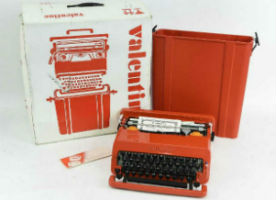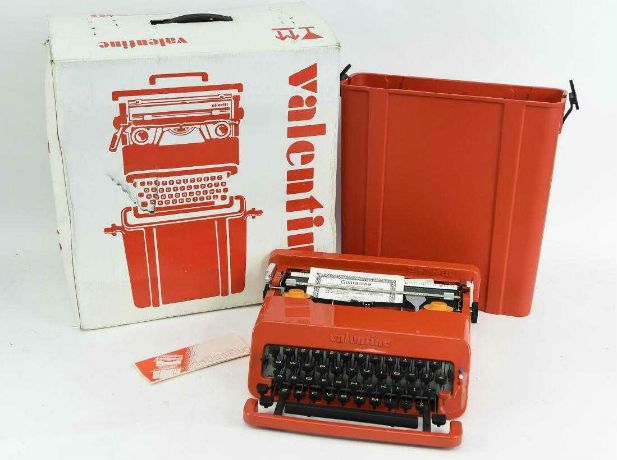
NEW YORK — If you’re of a certain age, you will remember writing letters or essays on typewriters even despite their foibles like sticky keys or having to use correction fluid to correct mistakes. While digital devices and computers have largely replaced typewriters, a small but loyal following still embraces typewriters.
A laptop computer might be more efficient, but it lacks the sensory delights of its mechanical and electronic predecessors. There is a certain pleasure in rolling in a sheet of paper and hearing the clatter of the keys, seeing the typebars swing up one after another and strike the paper, the ding of a bell as you hit the right margin and the swoosh-thud of the carriage return as it swung back to the starting position.
Certain authors are famous for eschewing computers and will only write on a vintage or antique typewriter, including David McCullough, who has written each one of his books on a used Royal typewriter he purchased in 1965, saying in an online interview in his love for his typewriter, “I don’t want to write faster. If anything, I probably ought to go more slower.”
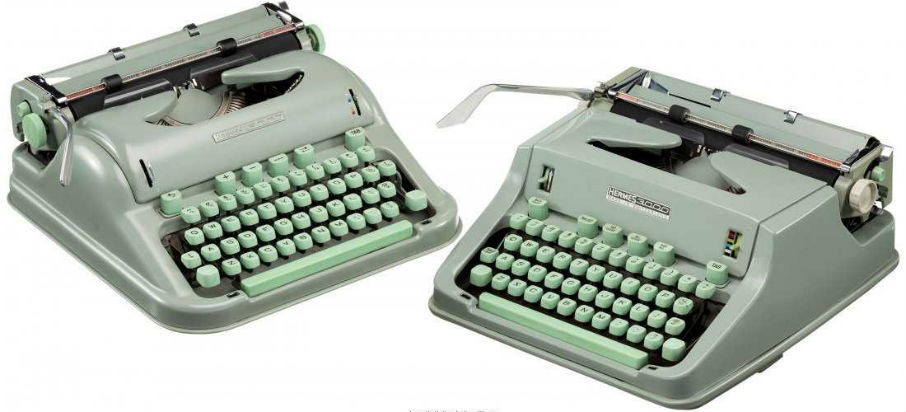
Other writers favoring typewriters included Hunter S. Thompson, who reportedly set up his typewriter in his kitchen to write columns and used it until his death in 2005, Danielle Steel, who wrote 90 novels on her typewriter; and Mark Twain, who claimed to be the first author to have a manuscript typed.
Rare typewriters and those who had famous owners tend to do perform well at auction as there is perennial collector interest in this niche field. In December 2009, a beat-up, pale blue Lettera 32 Olivetti manual typewriter that Cormac McCarthy composed several of his books on sold at Christie’s for $254,500 to a private collector. Have no fear that McCarthy went digital after this sale; a friend reportedly found McCarthy another Olivetti, the same model, for about $20.
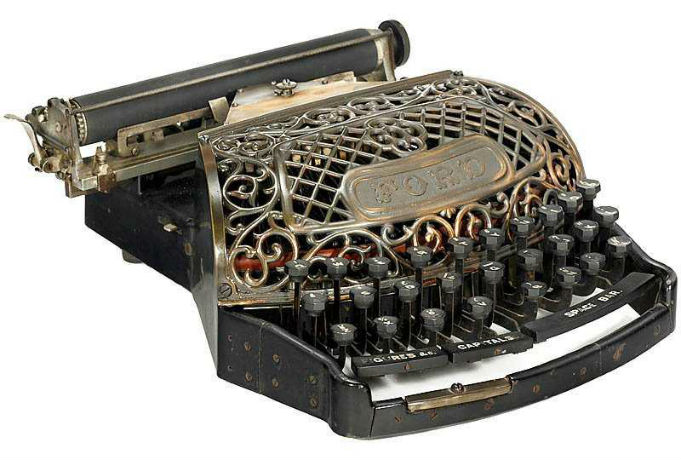
Actor Tom Hanks makes his living by acting, but shares a passion for typewriters, having assembled a fine collection of about 100, including his first purchase, an Hermes 2000, later upgraded to an Hermes 3000. His collection is so well known now that typewriters practically fall into his lap such as the 1934 Smith Corona Silent Typewriter in a crimson red hue that an online radio host offered him in exchange for Hanks appearing on his show. The gambit worked: Hanks got a new typewriter and the host got his guest.
In an October 2013 column for the New York Times, Hanks wrote he may use computers for work but for all else, especially writing letters, he prefers to go old school: “Everything you type on a typewriter sounds grand, the words forming in mini-explosions of SHOOK SHOOK SHOOK. A thank-you note resonates with the same heft as a literary masterpiece.”
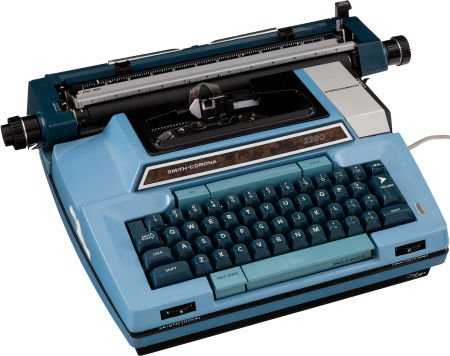
The history of typewriters dates back to the 16th century when Italian printmaker Francesco Rampazetto, invented the scrittura tattile, a machine to put letters onto paper in 1575. 1n 1714, a patent was filed in Britain by Henry Mill for a machine that looked quite similar to modern typewriters. The Malling-Hansen Writing Ball is the first typewriter in the world produced in a series, according to Auction Team Breker, a German auction house specializing in scientific and technological instruments. Breker sold an 1867 model with a low serial number of 94 for $114,283 in May 2016.

“Pastor Rasmus Hans Johan Malling-Hansen, director of Denmark’s deaf-and-dumb institute in Copenhagen, invented this wonderful brass precision machine,” according to the auction catalog entry. The machine used a now-defunct technology where 54 spring-driven letter typebars slid at different angles to a small central printing pole. Each letter was engraved onto the end of the tiny typebars by professional copperplate engravers of type foundries for the printing process. While typewriter design evolved with different companies (Remington, Sholes & Glidden, Underwood, Smith Corona, etc.), each adding innovations and building on each other’s work, it’s interesting to note that this early model had most of the major features of typewriters made decades later: automatic carriage return, space bar, paragraph indexing, a bell to indicate the end of a line, ribbon reverse and more.
Typewriter collectors today appreciate both the aesthetics of typewriters and the technical marvels that they continue to be.


